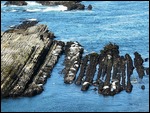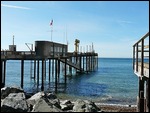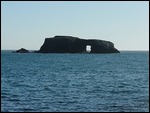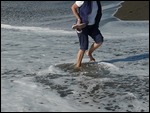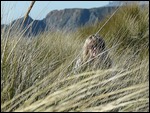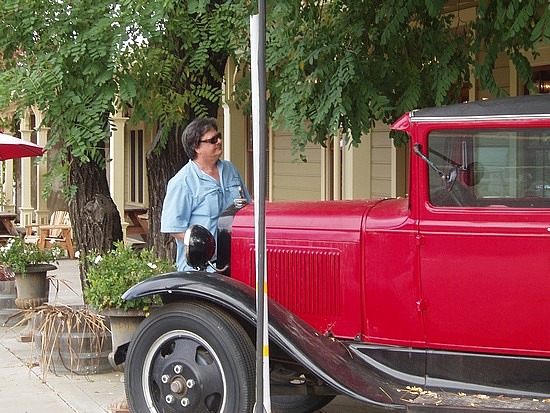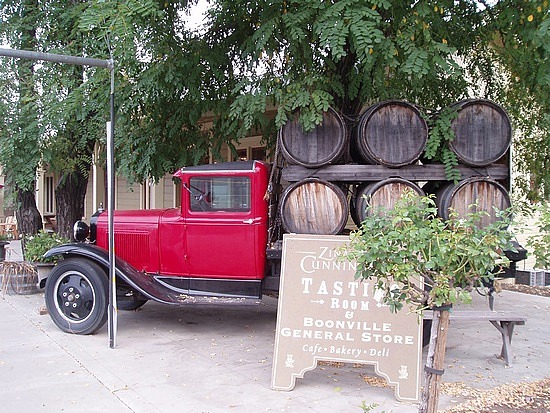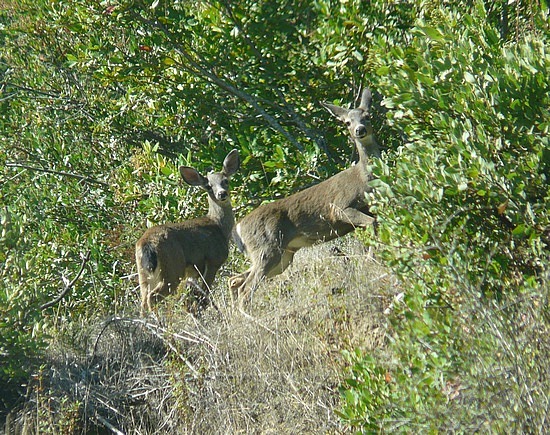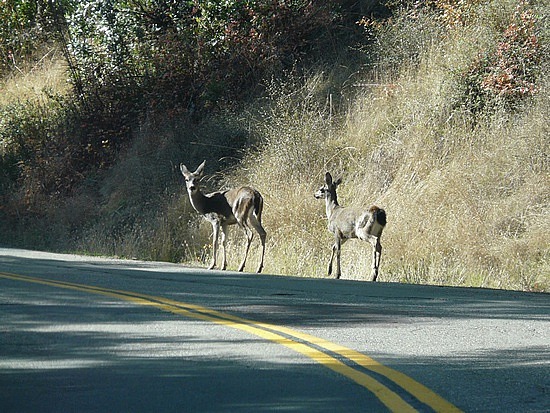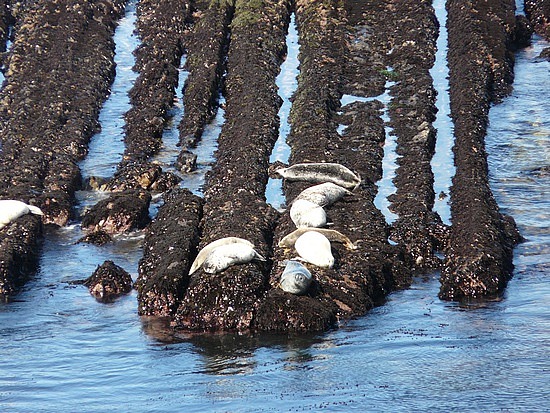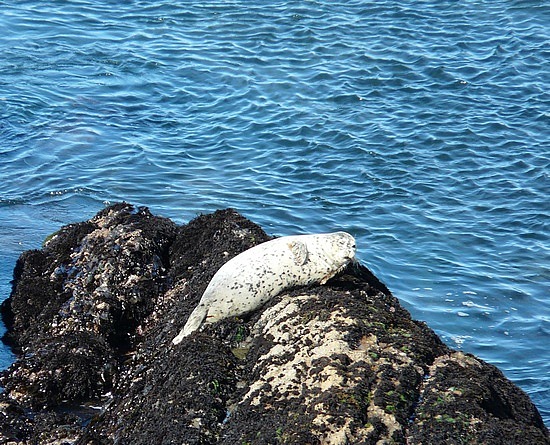I was planning to check out the Boonville general store before we left. Mark said I could buy anything I wanted as long as it would fit in the palm of my hand: that's how much room we had left in the car! So I decided to pass on the store visit. We haven't bought much and we've sent a few things home along the way but it's still a challenge every morning getting everything into the car. The Z4 can't be beat for driving but you must travel light.
As we drove along the very windy and narrow Mountain View Road toward the coast, we decided that some of the people who moved to the Mendocino area to farm marijuana and otherwise escape civilization live here. Every once in a while you see dirt roads curve into the woods with a no trespassing sign posted. You sure have to enjoy isolation to live here. It's a beautiful drive, though, and we saw several deer along the way. It took us an hour to drive the 25 miles.
We reconnected to coastal route 1 north of Point Arena, another nice small town. The 105-foot-tall Point Arena lighthouse, built in 1870, sits on a bluff above crashing waves, rocky shoreline, and sunning sea lions. Arena Cove has a fishing pier with dolly boat hoists. Abalone fishermen go out in wetsuits. We sat at an outdoor cafe and watched the activity near the pier.
Fifteen miles south of Point Arena is Gualala, an old logging port that's now an artists' colony. This southern part of Mendocino County coastline is mostly undeveloped and uninhabited, with green forests and coastal coves. South of Gualala you enter Sonoma County, my home county. Soon you come to Sea Ranch, a '60s development that covers over 5,000 acres along both sides of highway 1. Homes here are often featured in publications such as Sunset and Architectural Digest. They are architecturally restricted to fit into the environment and much of the land is kept as open space.
We planned to stop at Fort Ross, the restored remains of a Russian fur-trapping outpost built here in 1812, but for an unknown reason it was closed. The Russians were here for 30 years, farming wheat and potatoes, trading with local Indians, and trapping seals and sea lions for their furs, which they sold on the European market. They overfished and forced themselves out of business, then selling the fort to John Sutter of California history fame.
Highway 1 along this route is windy, narrow, and perched high above the sea. I was driving and it was a bit nerve wracking. Thank goodness the traffic was light and the RVs gone for the season. The road descends to Jenner, where the Russian River meets the Pacific Ocean. We stopped at a couple of beaches and of course I had to go in the ocean - but not for long. It is cold!
We decided to head east along the Russian River, where I learned to swim as a child. Mom loved to swim in the river and I have many happy memories of times there with her and my sister and brother. Houses along the river are mostly old and weathered, nestled in the redwoods, perfect for the environment. There are a few funky old towns along the way.
After leaving the river, we took back roads to the outskirts of Santa Rosa and then encountered city traffic and congestion. Darn, back to "civilization". But it was nice to get to my brother's new home at Oakmont, an oasis nestled among oak trees and gorgeous Sonoma County hills and the famed Sonoma County wine country.










